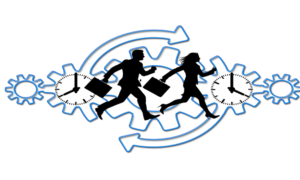A digital twin replicates a physical object or process synced with its physical counterpart. A digital twin aims to monitor, analyze, and improve physical objects or processes. Digital twins are a powerful tool for solving a wide range of problems. Some examples include improved safety compliance, optimized operations, and increased innovation. As more and more industries adopt digital twins, the potential benefits grow ever more significant.
What is a digital twin, and what are its benefits over traditional modelling methods?
A digital twin would be a digital representation of a physical object or system. The digital model is constantly updated with data from the physical object, allowing for real-time monitoring and analysis. The digital twin can improve the performance of the physical object or system by identifying problems and potential improvements.
Digital twins are frequently utilized in industrial settings, where they can use them to monitor and optimize production processes. For example, a digital twin of a manufacturing assembly line can be used to discover bottlenecks and inefficiencies. By analyzing the data from the digital twin, the assembly line is a structure that may be improved to increase productivity.
They can also use digital twins in healthcare to help manage patient care. Digital twins, for example, are used to collect medical data and produce personalized treatment strategies. Digital twins also have the potential to track the development of a patient’s condition and adjust their care as needed.
The benefits of digital twins over traditional modelling methods are numerous. Digital twins are constantly updated with data from the physical object, allowing for real-time monitoring and analysis. This information can be used to improve the performance of the physical object or system by identifying problems and potential improvements. Additionally, digital twins are much more scalable than traditional modelling methods, making them more accessible and affordable for businesses of all sizes.
What difficulties do digital twins solve?
There is no one-size-fits-all answer to this question, as digital twins can be used to solve various difficulties, depending on the industry and application. However, some specific examples of digital twin applications include improved safety compliance, optimized operations, and increased innovation.
Improved safety compliance is one of the most common applications for digital twins. Monitoring data from the digital replica of a physical object or system can identify and address potential safety hazards before they result in an accident. For example, if a digital twin of a factory assembly line identifies a potential hazard before someone is injured, efforts could be taken to reduce the danger.
Optimized operations is another common application for digital twins. Analyzing data from the digital model can identify and address inefficiencies and bottlenecks. For example, if a digital twin of a production process identifies an inefficient use of resources, steps can be taken to improve the efficiency of the process. It can lead to significant cost savings for businesses.
Increased innovation is another digital twin application that can significantly impact businesses. By constantly monitoring data from the digital replica of a physical object or system, Gaining fresh perspectives might result in better products or processes. For example, if a digital twin of a car engine identifies a potential design flaw.
Digital twins are becoming increasingly popular as more and more industries begin to see the advantages they offer over traditional modelling methods. The benefits of digital twins are numerous, and the applications for digital twins are vast. As digital twin technology continues to evolve, we will likely see even more innovative and impactful applications for digital twins in the future.
Are there any possible risks to utilizing digital twins in commercial settings, and if so, how can these be avoided or mitigated?
Various risks are linked with using digital twins in corporate contexts. The possibility of collecting sensitive information about a company’s operations through digital twins is one of the most significant risks. Competitors can then use this data to gain a competitive advantage. Additionally, the monitoring of workers and clients using digital twins may be a violation of their right to privacy.
Businesses should only use digital twins for legitimate purposes and take steps to protect the data they collect. Additionally, businesses should ensure they have the necessary consent from employees and customers before collecting and using their data. By taking these precautions, businesses can ensure that they are using digital twins responsibly and not violating any laws or ethical standards.
Conclusion
Digital twins are a relatively new technology with vast potential. They can solve various difficulties, depending on the industry and application. Some of the most common digital twin applications include improved safety compliance, optimized operations, and increased innovation. Although digital twins come with some potential dangers, these can be avoided or mitigated by taking responsible measures. Digital twin solutions have the potential to revolutionize the way businesses operate and provide a competitive advantage.



































